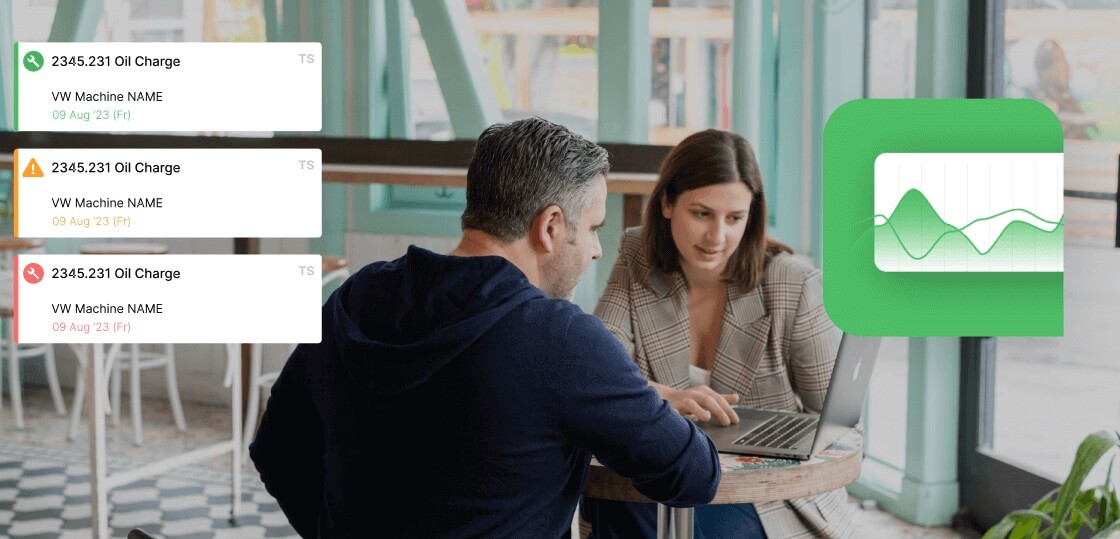We’ve reviewed the top platforms on the market to help you find the perfect fit. Here are our picks for the best maintenance management software systems for 2025.
Fabrico CMMS is our top choice because it masterfully combines powerful, enterprise-grade features with an incredibly simple and user-friendly design.
It is an all-in-one platform built to solve the real-world challenges maintenance teams face every day.
Fabrico empowers organizations to take complete control of their maintenance operations, from work orders and assets to inventory and analytics, all without the steep learning curve often associated with powerful software.
Its mobile-first approach ensures that your team has the tools they need to be efficient, whether they are in the plant or in the field.
Noteworthy Features:
-
Intuitive Work Order Management: Create, assign, and track work orders in seconds. The visual drag-and-drop scheduler makes it easy to plan work and adjust priorities on the fly.

-
Comprehensive Asset Hub: Build a complete history for every piece of equipment. Store manuals, warranties, QR codes, and track all associated costs and downtime in one central location.
-
Integrated Inventory Control: Never get stopped by a missing part again. Track real-time inventory levels, link parts directly to work orders, set low-stock alerts, and manage purchase orders within the system.

-
Actionable Reporting & Dashboards: Generate powerful, easy-to-read reports on key metrics like PM compliance, repair costs, and asset performance to make data-driven decisions.

-
Seamless Mobile Experience: The fully-featured mobile app gives technicians everything they need to succeed, including offline access, photo uploads with markup, and instant notifications.
Why It's Our Top Pick:
Fabrico strikes the perfect balance between power and simplicity.
It provides all the advanced tools you need to run a sophisticated maintenance program, but it presents them in a way that feels intuitive and easy for everyone to use. This focus on user adoption means you'll see a faster return on your investment.
Best Suited For:
Manufacturing plants, facility management teams, and any organization that needs a robust, scalable, and user-friendly system to manage their entire maintenance workflow. It is the ideal choice for teams looking to move beyond spreadsheets and basic tools to a truly modern, all-in-one platform.
Fiix is a well-known cloud-based CMMS that offers a strong set of features for organizing, tracking, and scheduling maintenance.
It is a powerful tool with a good reputation in the manufacturing and industrial sectors.
Fiix provides robust capabilities for managing assets, work orders, and inventory.
Noteworthy Features:
-
AI-Powered Insights: Fiix uses AI to help analyze maintenance data and suggest ways to improve.
-
Multi-Site Management: It is designed to help organizations manage maintenance operations across multiple locations from a single database.
-
ERP Integration: It offers strong capabilities for connecting with other business systems, like ERP software.
Potential Drawbacks:
Some users report that the interface can feel complex and may require more training to fully utilize all its features. The most powerful AI and reporting tools are often reserved for the higher-priced enterprise plans.
Best Suited For:
Large manufacturing and industrial companies that need deep integration with existing enterprise systems and have the resources to manage a more complex platform.
UpKeep is a popular mobile-first CMMS that is designed with frontline technicians in mind.
It has a clean interface and a strong mobile app, making it a favorite among teams that do most of their work on the go.
UpKeep offers a good balance of features for managing work orders, assets, and parts.
Noteworthy Features:
-
Strong Mobile App: The app is central to the UpKeep experience, allowing technicians to manage their entire workflow from their phones.
-
Request Portal: It provides a simple portal for non-maintenance staff to submit work requests, which can then be approved and converted into work orders.
-
Meter Readings: You can track asset usage based on meter readings (like hours or cycles) to trigger preventive maintenance tasks.
Potential Drawbacks:
While user-friendly, the reporting and analytics features may not be as deep or customizable as some other enterprise-level platforms.
Best Suited For:
Facilities management, property management, and small to medium-sized businesses that need a strong, mobile-centric solution for their team.
Limble CMMS is famous for its simplicity and ease of use.
The platform is designed to be set up and running in a matter of hours, not weeks.
It has a strong focus on making preventive maintenance easy to manage, which helps teams quickly reduce breakdowns.
Noteworthy Features:
-
Simple PM Scheduling: Limble makes it incredibly easy to set up and track recurring preventive maintenance tasks.
-
QR Code Asset Management: Technicians can simply scan a QR code on a piece of equipment to instantly pull up its history, manuals, and open work orders.
-
Drag-and-Drop Interface: Its visual, Kanban-style boards make it easy to see the status of every work order at a glance.
Potential Drawbacks:
While extremely easy to use, it may lack some of the deep customization and advanced workflow capabilities that larger, more complex organizations might need.
Best Suited For:
Teams that want to get organized quickly and establish a strong preventive maintenance program without a long implementation process. It is great for schools, hotels, and manufacturing facilities focused on ease of use.
eMaint is a powerful and highly flexible CMMS that has been a leader in the industry for many years.
As part of Fluke, it has strong ties to reliability and condition monitoring tools.
eMaint is known for its ability to be customized to fit the unique needs of almost any organization.
Noteworthy Features:
-
High Configurability: The platform can be extensively customized, from workflows and fields to reports and dashboards.
-
Reliability-Centered Maintenance: It has strong features for supporting advanced maintenance strategies like predictive maintenance (PdM).
-
Interactive Plans: Users can upload floor plans or site maps and tag assets directly on the image, making them easy to locate.
Potential Drawbacks:
Its high degree of flexibility can also mean a steeper learning curve. Setting up the system to perfectly match your needs may require more time and effort upfront.
Best Suited For:
Medium to large enterprises, especially those in manufacturing and energy, that need a highly customizable system to support complex maintenance and reliability programs.
Hippo CMMS focuses on delivering a simple and visually appealing maintenance management experience.
It is designed to be straightforward, providing essential features without overwhelming users.
The software is often praised for its intuitive design and helpful customer support.
Noteworthy Features:
-
Interactive Floor Plans: Like eMaint, Hippo allows you to upload maps and plans, making it easy to visually locate assets and manage work.
-
Simplified Work Order Portal: It offers a very easy-to-use portal for anyone in the organization to submit maintenance requests.
-
Vendor Management: The system helps you track and manage your relationships with outside vendors and contractors.
Potential Drawbacks:
Hippo is designed for simplicity, so it may not have the advanced inventory management or deep analytical capabilities of more robust enterprise systems.
Best Suited For:
Organizations in healthcare, hospitality, education, and property management that need a user-friendly system for managing work orders and preventive maintenance.
ManagerPlus is an asset management software that excels at helping companies track and manage physical assets, especially fleets and heavy equipment.
It provides strong tools for linking maintenance with inventory and purchasing functions.
The software is designed to help companies maximize their return on investment in their most critical assets.
Noteworthy Features:
-
Strong Fleet Management: It has specialized features for managing vehicles and other mobile assets, including fuel tracking and inspections.
-
Inspection Management: You can create and manage detailed inspection checklists to ensure safety and compliance.
-
Purchasing and Inventory: It offers robust tools for managing purchase orders and tracking spare parts inventory.
Potential Drawbacks:
While powerful for asset-heavy industries, its interface can feel a bit dated compared to more modern, cloud-native platforms.
Best Suited For:
Companies in construction, fleet management, agriculture, and other asset-intensive industries that need detailed tracking and management of their equipment.









